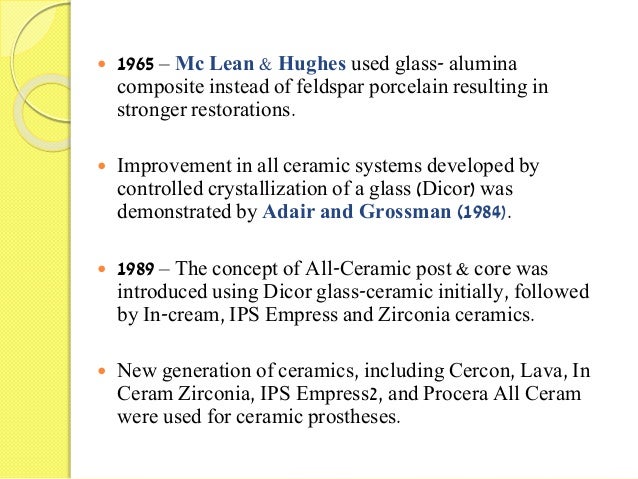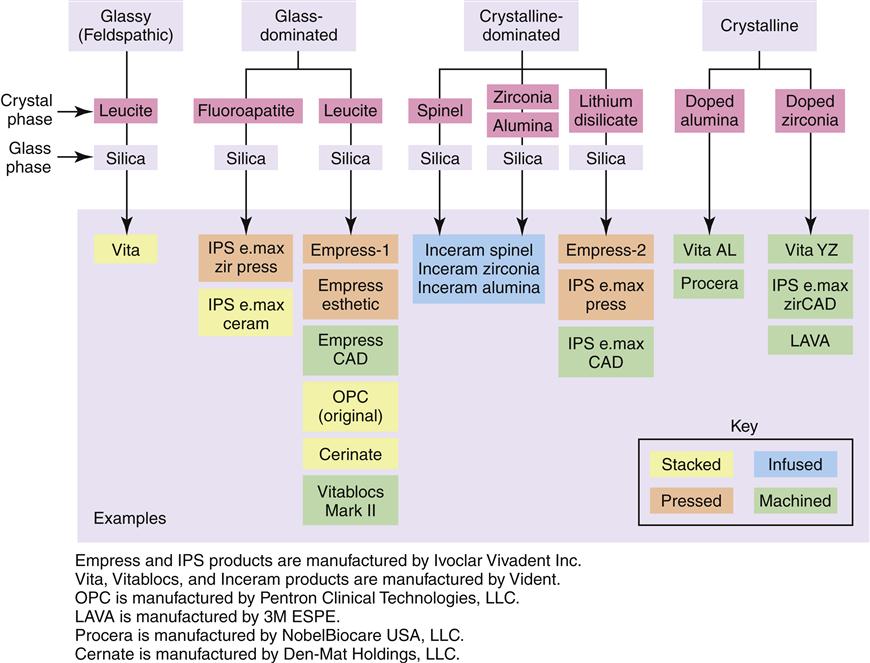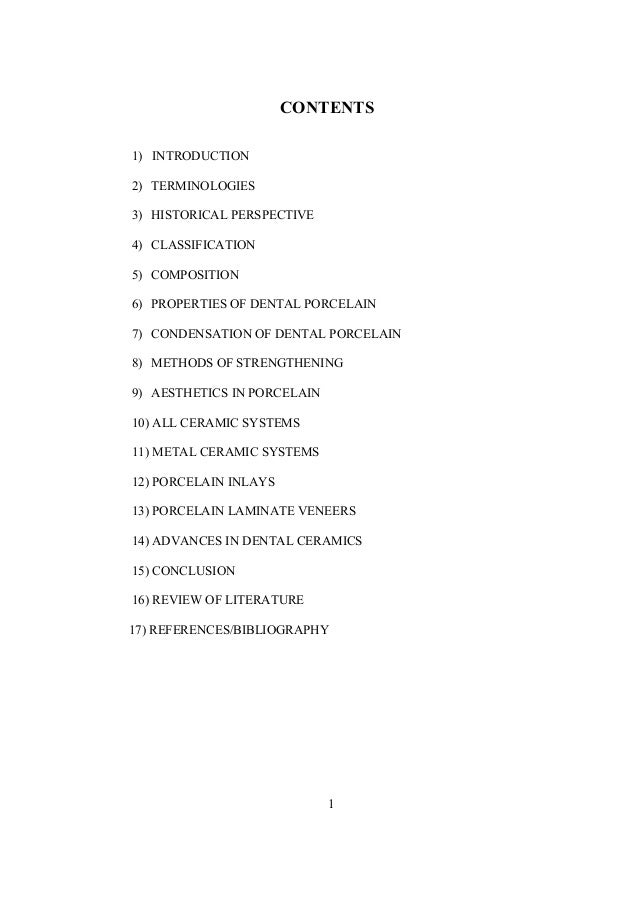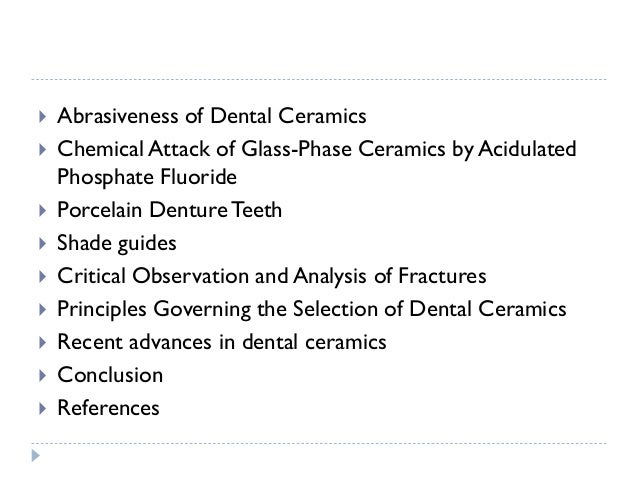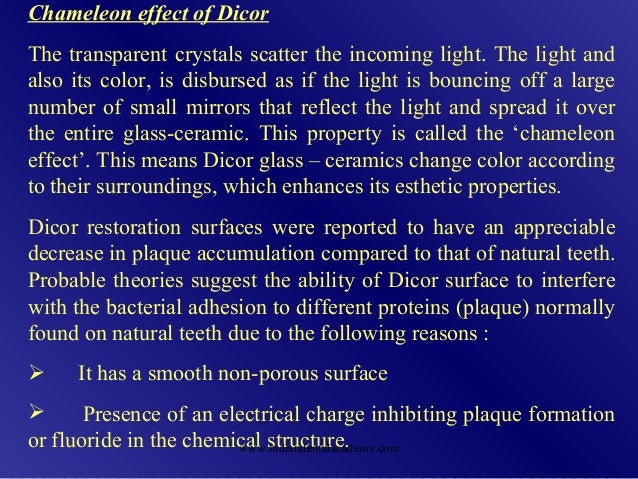New microstructures have also been developed by the industry in order to offer ceramic and composite materials with optimized properties i e good mechanical properties appropriate wear behavior and acceptable aesthetic characteristics.
Properties of dental ceramics and composites.
V novel processing technologies.
The term dental ceramics comprises a wide variety of materials that reaches from filled glasses to nearly dense sintered ceramics from products that are shaped from powders and melts to components milled from blanks before or after sintering.
Two physical properties in particular are used to assess the clinical performance of today s dental ceramics.
Silica barium silicate glass barium glass barium borosilicate glass zirconia and short e glass fiber as fillers were used.
Tanja lube robert danzer in advanced ceramics for dentistry 2014.
1 department of prosthodontics vishnu dental college bhimavaram west godavari andhra pradesh india.
Jithendra babu 1 rama krishna alla 2 venkata ramaraju alluri 1 srinivasa raju datla 1 anusha konakanchi 3.
The concern that a ceramic will fracture in service remains a problem for ceramic alloy and all ceramic restorations alike although the newest crystalline ceramics see figure 14 3 are beginning to challenge this notion.
Dental ceramics and processing technologies have evolved.
Ceramics or porcelains are chemically intimate mixtures of metallic and non metallic elements that allow ionic k2o and or covalent bonding sio2 to occur.
Over the last decade it has been observed that there is an increasing interest in the ceramic materials in dentistry.
Part i an overview of composition structure and properties.
2 department of dental materials vishnu dental college bhimavaram west godavari andhra.
This article in part i.
Reviews the composition structure and properties of dental ceramics from the literature available in pubmed and other sources from the past 50 years.
Esthetically these materials are preferred alternatives to the traditional materials in order to meet the patients 39.
Suggested the effect of a short fiber as the filler on the physical and depth of cure properties of dental restorative composite materials and compared it with eight other commercial dental composites.
Industrial ceramics are commonly understood to be all industrially used materials that are inorganic nonmetallic solids.
Their properties vary over a wide range.
Usually they are metal oxides that is compounds of metallic elements and oxygen but many ceramics.
Ceramic composition and properties atomic and molecular nature of ceramic materials and their resulting characteristics and performance in industrial applications.
Composition of dental ceramics and dental porcelain.
Modern dental composite materials are thus a blend of glass or ceramic particles dispersed in a photopolymerizable synthetic organic resin matrix.




